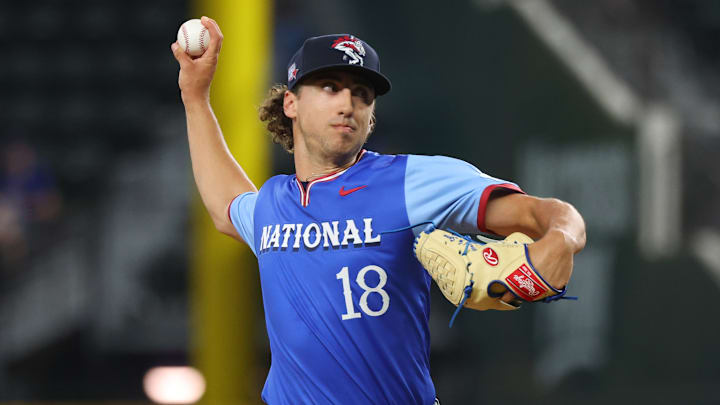Deciding when to call up a top pitching prospect is never an exact science. Every team has its formula, juggling development, roster space, contract rules, inning limits, and the ever-present fear of pulling the trigger too soon. It’s the kind of decision that has GMs looking like Alan in The Hangover, equations swirling around their heads as they calculate every possible outcome. The New York Mets are in that exact spot with Brandon Sproat. The 2023 second-round pick has the fastball, slider, and mound presence to make an impact, but David Stearns has to decide when to hit—because once Sproat is dealt into the big-league game, there’s no taking the bet back.
Barring something unexpected—like a wave of injuries hitting the rotation—one thing is clear: Brandon Sproat won’t be breaking camp with the big-league club. And while that might not be the most exciting news for Mets fans eager to see his debut, it could be the best thing for his development. Instead of being thrown into the deep end, he’ll have time to reflect on his struggles in Triple-A last season, pinpoint what went wrong, and make the necessary adjustments. Spring training gives him the perfect environment to refine his mechanics, sharpen his command, and soak up knowledge from the veterans in the rotation. This isn’t a step back—it’s a chance to make sure that when he does arrive in Queens, he’s ready to stick.
So when can we expect Brandon Sproat in a Mets jersey lighting up the radar gun at Citi Field?
If recent history is any indication, early May seems like a safe bet for Sproat’s debut. Last season, the Mets found themselves in a similar spot and called up their top pitching prospect at the time, Christian Scott, on May 4th—and yes, the fourth was with him (I had to). He rewarded them with 6 2/3 stellar innings, proving the timing was right. The Mets aren’t alone in this approach. Over the last two seasons, teams have strategically brought up arms like Paul Skenes, Bobby Miller, Eury Pérez, Brandon Pfaadt, Robert Gasser, and Bryce Miller around that same timeframe. A May call-up allows teams to manage innings more effectively, keeping young arms in the 100-125 inning range while still giving them meaningful big-league experience.
Sproat has the kind of electric stuff that can inject serious energy into a rotation, and the Mets might need exactly that as they navigate a grueling stretch against the Yankees, Red Sox, Diamondbacks, Dodgers, and Pirates. It’s not the easiest stretch to break into, but if he’s ready, there’s no better proving ground. A strong debut could solidify his place in the rotation, while any struggles would offer a clearer picture of what still needs refining.
That evaluation period will be crucial for David Stearns, who has his eyes not just on the regular season but on building a team built to last through October. If Sproat proves he belongs, the Mets’ rotation could be set for the long haul. If not, Stearns will have time to explore the trade market and decide whether reinforcements are needed. The Mets don’t just want to reach the postseason—they want to make sure they have the firepower to go deep once they’re there.
In the end, the decision on when to bring up Brandon Sproat will hinge on balancing the team's immediate needs with his long-term development. The Mets are in a unique position, where patience could pay off handsomely down the line. By taking the time to ensure Sproat is fully prepared, Stearns not only safeguards the young pitcher’s future but also sets the stage for a more formidable rotation as the season unfolds. As the countdown to his big-league debut begins, Mets fans can look forward to watching Sproat evolve into a key piece of the puzzle. The excitement is building, and when he finally steps onto the mound at Citi Field, it could mark the beginning of something special for both the player and the team.
